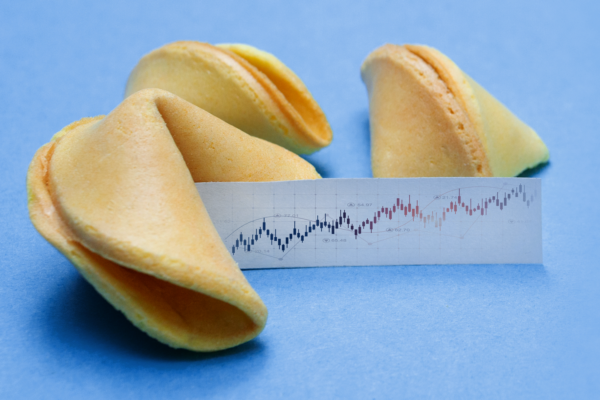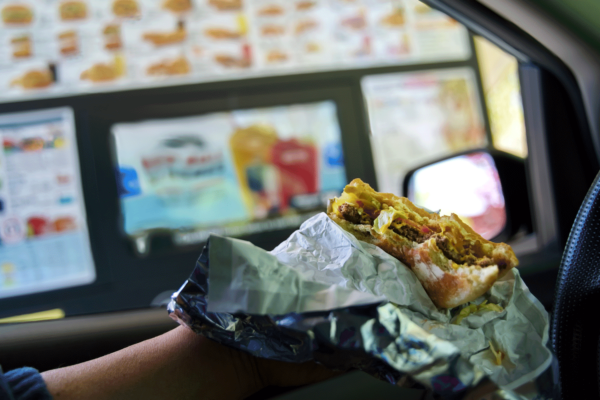Regardless of what consumers choose for dessert or when they choose to eat it, few are concerned about the health of a chosen treat; most instead just want a little indulgence or craving satisfaction.
And that’s perhaps when we asked consumers about how often they have dessert, they, well…lie.
In a recent Datassential survey, only 21% of consumers say they had a dessert within the past day, but the number who actually did? Three times that (63%.)
All in all, nearly a quarter of consumers eat dessert every day. Those that don’t, or indulge less often, cite health or a desire to reduce sugar intake as the top reasons to abstain.
And even if consumers choose a dessert (somewhere in between every day and hardly at all,) they’re eating more of it at restaurants or retail foodservice outlets than before the pandemic.
Four times the number of consumers eat desserts at home more often now than they did a year ago than the number that decreased their intake. And about two-thirds of dessert consumption from foodservice (including restaurants and retail) has either stayed the same or increased in the same time frame.
The biggest cookie monsters are…
Women are more likely to indulge in dessert than men across the board – cookies to cakes, pastries to brownies – and every delicious treat in between. Older consumers tend to eat dessert far more often than younger generations, too – particularly cookies and pie.
Middle generations – Millennials and Gen Xers – who are more likely to have children at home – tend to eat more pudding, perhaps swiped from the pantry before it has a chance to reach a lunch box. Those generations are also more likely to have their dessert as an afternoon snack, where the youngest and oldest adults (Gen Z and Boomers) most often eat desserts as a late-night snack.
Sweet times they are a-changin’
Overall, consumers are eating more desserts as snacks in between meals instead of at the end of one. And this is an opportunity for foodservice operators: despite nearly half of consumers saying their last dessert was eaten as a late-night or afternoon snack, only one in ten operators report their highest dessert sales at this time.
And bigger isn’t always better. Four out of five (82%) consumers are at least somewhat interested in mini desserts, compared with 57% who are interested in jumbo varieties.
A mix of old, new, and itty bitty
Considering these results, it makes sense for restaurants and foodservice establishments to offer more small desserts, particularly considering that more consumers are fitting a treat into their day instead of having a big dessert after dinner. Since price doesn’t factor as high with desserts as it does with other food, mini desserts can be a great option for foodservice operators looking to grow sales.
And what do we want when we do choose to have a treat? Something that reminds us of our childhoods, or simpler times.
Nearly three-in-five (57%) consumers are interested in nostalgic desserts (with flavors like s’mores, cookie dough, birthday cake, or banana pudding) And this is another opportunity for operators, as just two-in-five operators serve nostalgic desserts today.
And what about flavors? Mascarpone, sesame, ube, and brown butter are just a few of the dessert flavors that have made it into the Adoption phase of Datassential’s Menu Adoption Cycle, popping up at trendy restaurants and specialty grocers. And those that are in the earliest stage – “Inception” – spotted in fine dining restaurants and other innovative food sellers, include herbs like thyme, basil and rosemary and more savory notes like turmeric, black pepper and even red bean.
What makes us scream for ice cream
Older consumers are driven by lower prices and premium ingredients, while younger consumers are more motivated to try desserts that are globally-inspired, sustainably-produced, plant-based or trending on social media.
Innovation is the key to growing in any food segment, and dessert is no different. But what motivates consumers most to try these different desserts? Free samples, and old standbys with a twist. A free bite of a new brownie or a classic apple pie with the addition of a savory note or herb would go a long way to getting a consumer to try something new.
So the next time you visit a restaurant, ask for the dessert menu – no need to lie about it.
_____________________________________________________________
Samantha Des Jardins is a Content & Marketing Manager at Datassential.
If you would like to learn more about Datassential’s suite of food and beverage intelligence solutions, reach out to us here.
For media or press inquiries, email media@datassential.com.






